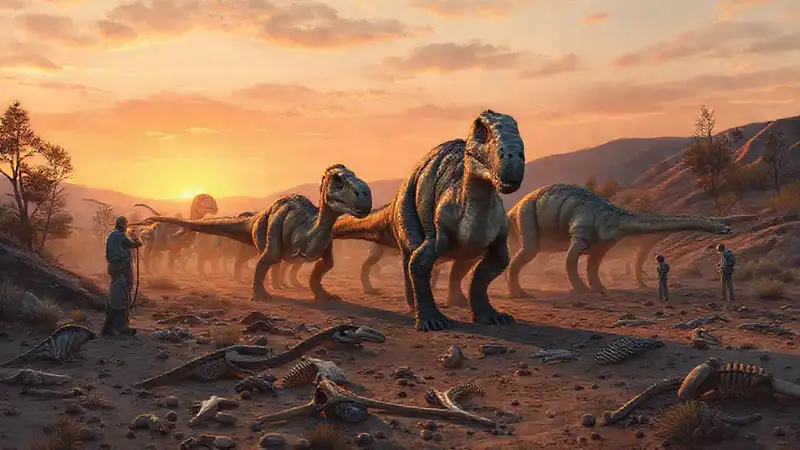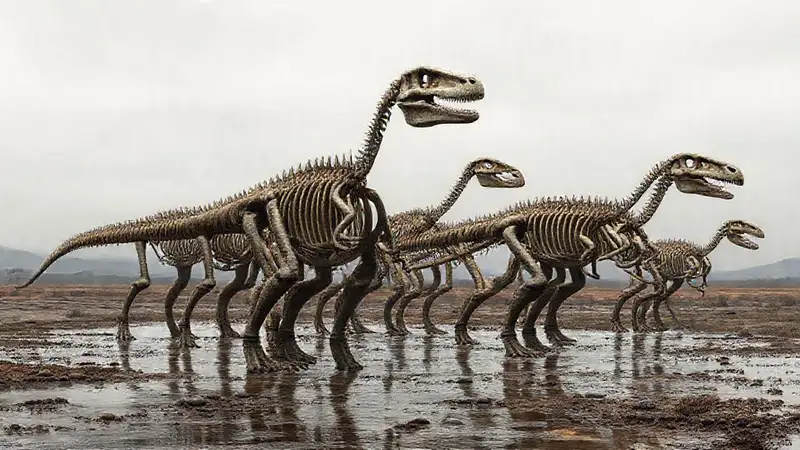Edmontosaurus, a massive, duck-billed dinosaur, roamed North America during the Late Cretaceous period. Its fossils are incredibly common in the rich sedimentary beds of Montana and Wyoming, providing a wealth of data for paleontologists to study. However, understanding the social lives of these giants – particularly how they lived in herds – remains a complex challenge. Reconstructing these behaviors requires painstaking analysis of fossil evidence and integrating it with what we know about related dinosaur species and modern animal social dynamics. The goal is to move beyond simply identifying a bone bed to truly understanding the risks and strategies Edmontosaurus employed to survive.
Paleontological research into Edmontosaurus is continually evolving, employing new techniques in 3D reconstruction, taphonomy (the study of how fossils are formed), and statistical modeling. This growing understanding has prompted renewed interest in Edmontosaurus herd dynamics and the potential threats they faced. The sheer number of Edmontosaurus fossils found together offers an unprecedented opportunity to test hypotheses about group cohesion and predator avoidance – a truly exciting area of investigation for dinosaur paleontology.
Fossil Discoveries: The Building Blocks of Understanding
The sheer volume of Edmontosaurus fossils found in close proximity – often dubbed “bone beds” – is the cornerstone of our understanding. Initial discoveries in the 1980s, notably the Horseshoe Canyon Ranch, revealed incredibly dense concentrations of Edmontosaurus remains. These assemblages were initially interpreted as simple graveyard sites, victims of catastrophic events like floods. However, later research revealed that these bone beds are far more likely to represent active feeding grounds, where herds congregated to graze on abundant vegetation.
The key to this shift in interpretation lies in the consistent presence of gastroliths (stones swallowed to aid in digestion) alongside the skeletal remains. This suggests that Edmontosaurus were actively foraging, rather than dying from a single event. Furthermore, the teeth found within these beds are often fragmented and worn, reflecting a constant process of mastication and consumption, solidifying the image of a thriving, mobile herd. Analyzing the spatial distribution within these bone beds provides crucial clues about the herd's movements and social structure.
Taphonomy and Preservation: Revealing Herd Dynamics
Taphonomic analysis, the study of how fossils form, is critical for accurately interpreting Edmontosaurus bone beds. Fossilization isn’t a passive process; it's influenced by factors like water currents, scavenging, and burial. Researchers meticulously examine the orientation of bones, the presence of ripple marks, and the types of sediment surrounding the fossils. These details allow them to reconstruct the environment in which the herd died and were subsequently fossilized.
The specific preservation conditions – often rapid burial in fine-grained sediments – played a vital role in preserving the herd as a cohesive unit. Conversely, environments with more rapid erosion would likely have scattered the remains, making the identification of a true herd impossible. Examining bone breakage patterns—are bones smashed or simply tumbled—also provides insights into the cause of death. High levels of crushing might point to a predator attack, while disorganized scatter suggests natural causes.
Modeling Herd Size and Composition

Statistical modeling techniques are being increasingly employed to estimate Edmontosaurus herd sizes and the proportion of adults, juveniles, and subadults within the groups. By analyzing the number of individuals, their relative bone sizes, and the degree of bone preservation, researchers can create probabilistic models that simulate herd dynamics. These models consider factors like foraging efficiency, predator risk, and the energy demands of the herd.
These simulations aren’t definitive answers, but they generate testable hypotheses about how a Edmontosaurus herd might have functioned. For instance, models suggest that herds could have ranged in size from a few dozen to several hundred individuals, with a relatively high proportion of juvenile animals. The presence of larger, more mature individuals likely provided protection to the younger ones, demonstrating a clear hierarchical structure.
Predator Risks and Defensive Behaviors
Understanding the predators that faced Edmontosaurus is crucial to assessing herd vulnerability. Tyrannosaurus rex and other large theropods undoubtedly posed a significant threat. Researchers are exploring how Edmontosaurus may have responded to these predators. The robust build and beak of Edmontosaurus suggests a defensive capability, potentially using their mouths to bite or push away predators. Analyzing bite marks on the bones can help determine the types of predators involved and whether they targeted individuals or entire herds.
Furthermore, the density of bone beds may have served as a form of collective defense – a larger group would have been more difficult for a predator to single out an individual. The discovery of potential “alarm calls” – fossilized indicators of heightened stress – suggests that Edmontosaurus may have employed sophisticated communication strategies to warn each other of danger.
Conclusion
The study of Edmontosaurus herd behavior represents a fascinating synthesis of paleontological discoveries and modern analytical techniques. The sheer number of fossil finds, combined with careful taphonomic analysis and sophisticated modeling, is dramatically shifting our understanding of these magnificent dinosaurs. These discoveries paint a picture of Edmontosaurus as a highly social animal, actively foraging and employing strategies to minimize risk, ultimately supporting their survival in a challenging Cretaceous environment. Continued research promises to further refine our understanding of these incredible herds and their place in the ancient world.






Deja una respuesta